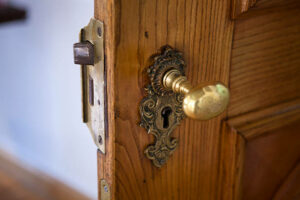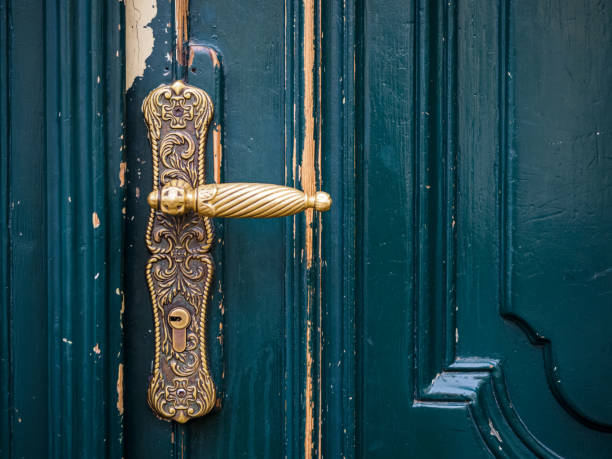Antique locks have a fascinating history that spans centuries, offering a glimpse into the craftsmanship and functionality of the past. These locks not only served a practical purpose but also showcased intricate designs and exquisite detailing. Exploring the world of antique locks allows us to appreciate the beauty of these unique pieces and delve into the stories they hold.
One of the most intriguing aspects of antique locks is their evolution over time. From the earliest models that relied on simple mechanisms to the more complex designs that emerged with advancements in technology, each lock tells a tale of ingenuity and innovation. It is remarkable to see how artisans honed their skills and incorporated new ideas into their creations, making antique locks a testament to human creativity and problem-solving.
Antique locks also bear the mark of time, displaying signs of aging that add to their allure. Rust, patina, and wear and tear provide a sense of authenticity and character to these pieces. They remind us of the many hands that have turned their keys and the journeys they have accompanied. But to fully appreciate the history and beauty of antique locks, it is essential to understand their inner workings, the challenges involved in their repair and restoration, and the intricate techniques used to bring them back to life.
In other words, exploring the fascinating world of antique locks allows us to appreciate the history and beauty that these unique pieces hold. From their evolution over time to the signs of aging that add to their charm, antique locks offer a glimpse into the craftsmanship and ingenuity of the past. Whether you are an avid collector, history enthusiast, or simply intrigued by the artistry of these locks, delve into this enchanting realm and unlock the stories that await you.
Signs of Aging: Identifying Common Issues in Antique Locks
Antique locks hold a certain allure with their intricate designs and rich history. However, just like any other antique item, these beautiful locks can show signs of aging over time. Identifying common issues in antique locks is crucial in understanding their condition and determining the necessary steps for restoration.
One of the most evident signs of aging in antique locks is rust. Rust can develop on various parts of the lock, including the keyhole, the key itself, or even the internal mechanisms. It can hinder the smooth operation of the lock and make it difficult to unlock or lock the door. Furthermore, rust can weaken the metal, causing it to become brittle and prone to breaking or snapping.
Wear and tear is another common issue in handling antique locks. Due to years of use, the intricate parts of the lock may start to show signs of friction and rubbing. These symptoms can result in loose or misaligned components, making it harder for the lock to function properly. Additionally, worn-out springs or levers can affect the lock’s ability to engage or disengage smoothly.
Understanding the signs of aging in antique locks is essential for any collector or enthusiast. By identifying these common issues, one can take the necessary steps to preserve the lock’s functionality and beauty. Whether it’s dealing with rust or addressing wear and tear, restoring antique locks requires a delicate touch and a keen eye for detail.
The Importance of Antique Lock Repair: Preserving History and Functionality
When it comes to antique locks, there is more at stake than just functionality. These locks are valuable pieces of history, representing a time when craftsmanship and artistry were highly valued. Preserving and repairing antique locks is not only important for ensuring their continued functionality but also for safeguarding the stories they hold. Antique locks can reveal fascinating details about the past, from the design aesthetics of a particular era to the technical innovations of the time.
By repairing and restoring these delicate mechanisms, we can keep the stories of the past alive for generations to come. However, preserving antique locks is not without its challenges. Sourcing the right parts can be a daunting task, as many components are no longer in production. It often requires extensive research and the expertise of locksmiths and specialists who understand the intricacies of these vintage mechanisms.
Cleaning and restoring antique locks must also be done carefully to avoid causing further damage. It takes a delicate touch and an eye for detail to bring these locks back to their former glory. In short, antique lock repair is not just about restoring functionality; it is about preserving history.
These locks hold stories of the past and deserve to be maintained for future generations. While there are challenges involved in the process, the rewards of preserving these intricate pieces of artistry are truly worth it. So next time you come across an antique lock in need of repair, remember the importance of preserving its history and functionality.
Unlocking the Secrets: Understanding the Inner Workings of Antique Locks
Antique locks have always held a certain allure, not just for collectors but for anyone with a curious mind. They represent a fascinating blend of craftsmanship and ingenuity, with intricate mechanisms hidden away inside their solid exteriors. Understanding the inner workings of these locks is like unlocking a secret world of engineering marvels.
At the heart of every antique lock lies a series of pins and tumblers that must align perfectly to allow the lock to open. These pins are of varying lengths and need to be lifted to a precise height by the key in order to align with the gaps in the lock cylinder. It’s this precise alignment that allows the lock to turn and grant access. The complexity of these systems can vary, with some locks featuring multiple layers of pins and levers that require even more finesse to operate correctly. Exploring the inner workings of antique locks reveals not only the skill of the locksmiths who created them but also the evolution of lock technology over time.
From the ancient Egyptian wooden locks to the intricately designed medieval locks, each era brought its own innovations and advancements. By understanding these inner workings, we can gain a deeper appreciation for the craftsmanship and engineering prowess of those who came before us. Unlocking the secrets of antique locks is not just about satisfying our curiosity; it also helps us identify the age, authenticity, and value of these historical treasures. Whether you’re a collector or simply intrigued by the beauty and history of antique locks, delving into their inner workings can be a rewarding journey of discovery.
Tools of the Trade: Essential Equipment for Antique Lock Repair
One of the most essential aspects of antique lock repair is having the right tools at your disposal. These specialized tools are designed to carefully and delicately handle intricate and delicate parts of antique locks. The key to successfully repairing and restoring these locks lies in the precision and attention to detail that these tools offer.
One tool that is a must-have for any antique lock repair enthusiast is a set of fine-tipped tweezers. These tweezers allow you to safely manipulate small components without causing any damage. The fine tips ensure that you can easily grip and maneuver even the tiniest of screws or springs, making it easier to disassemble and reassemble the lock. Additionally, a good set of tweezers can help in removing any foreign particles or debris that may be obstructing the lock’s functionality.
Another essential tool for antique lock repair is a set of precision screwdrivers. These screwdrivers come in various sizes and are specifically designed to fit the different types of screws found in antique locks. The ability to tighten or loosen screws with precision is crucial to ensuring that all components are securely in place and properly aligned. Using the wrong size or type of screwdriver can easily strip screws or damage the delicate threading of the lock, so investing in a high-quality set is well worth it.
From Rust to Shine: Step-by-Step Guide to Cleaning Antique Locks
Cleaning antique locks requires careful attention and a step-by-step approach to bring them from a state of rust to a beautiful shine. To begin, gather the necessary supplies: a soft cloth, mild soap, a toothbrush, and a rust remover. Start by gently wiping away any loose dirt or debris from the surface of the lock using a soft cloth. Avoid applying too much pressure, as this could damage the delicate mechanisms of the lock.
Next, create a mixture of mild soap and warm water and dip the toothbrush into it. Carefully scrub the surface of the lock, paying close attention to any areas with visible rust. Use gentle, circular motions to remove the rust, taking care not to scrub too vigorously. If the rust proves stubborn, a rust remover specifically designed for antique metal may be applied.
However, exercise caution and follow the instructions on the rust remover carefully to avoid any damage to the lock. Once the rust has been successfully removed, rinse the lock with clean water to remove any residue from the soap or rust remover. Gently pat the lock dry with a clean cloth, ensuring that no moisture remains.
Finally, to achieve a brilliant shine, consider using a metal polish specifically formulated for antique locks. Apply a small amount of polish to a soft cloth and gently buff the lock in circular motions until it gleams. Cleaning antique locks requires patience and a gentle touch, as these delicate pieces carry with them a piece of history. By following these steps and taking care to avoid any abrasive techniques or harsh chemicals, you can restore the beauty and functionality of your antique locks, bringing them back to their former glory.
The Art of Restoration: Techniques for Bringing Antique Locks Back to Life
Restoration work on antique locks is a delicate and meticulous process that requires a skilled hand to utilize a range of techniques to bring these vintage treasures back to their former glory. One of the key steps in restoring antique locks is thorough cleaning. Over the years, dirt, dust, and grime can accumulate on the surfaces, affecting both the functionality and aesthetics of the lock. By carefully removing these layers, restorers can reveal the intricate designs and patterns that make each lock unique. Additionally, cleaning the internal components helps to ensure smooth operation once the lock is put back into use.
Another essential technique in the art of restoration is repairing or replacing damaged parts. Antique locks can suffer from wear and tear over time, resulting in broken components or missing pieces. Restorers need to have a deep understanding of the lock’s mechanisms and structure to identify which parts need attention. In some cases, original parts may be repairable, while in others, replacements are necessary. Finding the right components that match the lock’s era and style can be a challenge, but it is crucial for maintaining the authenticity and value of the piece.
Finding the Right Parts: Navigating the Challenges of Sourcing Antique Lock Components
When sourcing antique lock components, finding the right parts can be a challenging task. With the passage of time, many antique locks have become obsolete, making it difficult to locate the exact pieces needed for repair or restoration. The availability of these components is often limited, and it requires a keen eye and extensive knowledge to navigate the world of antique lock parts.
One of the main challenges in sourcing antique lock components is the sheer variety of locks that have been produced throughout history. Each lock may have its own unique set of parts, and identifying the correct pieces can be like finding a needle in a haystack. Additionally, the scarcity of certain parts adds another layer of complexity to the process. Some components, such as specific key blanks or ornate decorative plates, may be extremely rare and hard to come by. As a result, locksmiths and collectors often have to rely on a network of suppliers, antique stores, and online marketplaces to search for the elusive pieces they need.
Due to issues such as lack of availability, sourcing antique lock components is a process that requires patience, expertise, and a bit of luck. The intricate nature of antique locks and their parts makes it a challenging task to find the right pieces for repair or restoration. However, for those passionate about preserving history and functionality, the thrill of uncovering the perfect component is well worth the effort.

Where can I find antique lock components?
There are a few options for sourcing antique lock components. You can try visiting local antique shops or flea markets, as they may have some parts available. Online marketplaces like eBay or Etsy also have a wide selection of antique lock components for sale. Additionally, you can join forums or online communities dedicated to antique locks, where members often trade or sell parts.
How can I determine if a lock component is authentic?
Authenticity can be tricky when it comes to antique lock components. One way to ensure authenticity is to buy from reputable sellers or dealers who specialize in antique locks. They can provide certificates of authenticity or detailed information about the components. If you’re unsure, it’s always a good idea to consult with experts or experienced collectors who can help identify genuine antique lock components.
What should I do if I can’t find the exact component I need?
If you’re having trouble finding a specific antique lock component, don’t despair! You can consider reaching out to antique lock restoration specialists or locksmiths who might have access to a wider range of parts. They may be able to custom-make or modify existing components to fit your needs. Alternatively, you can also try networking with other antique lock enthusiasts who might be willing to trade or help you locate the missing component.
How do I ensure that the antique lock components I purchase are in good condition?
When purchasing antique lock components, it’s essential to carefully examine the item’s condition. Look for any signs of damage, rust, or wear. If possible, ask the seller for detailed photos or videos to get a better idea of the component’s condition. It’s also a good idea to inquire about the history of the part and whether it has been restored or repaired. If you’re unsure, don’t hesitate to ask questions or seek advice from experts before making a purchase.
Can I use modern lock components as substitutes for antique lock components?
While it may be tempting to use modern lock components as substitutes, it’s generally recommended to stick with authentic antique lock components for restoration projects. Using modern parts can compromise the historical accuracy and value of the antique lock. However, there might be situations where it’s unavoidable to use modern components. In such cases, it’s important to consult with experts or experienced locksmiths who can guide you on the best alternatives that will maintain the integrity of the antique lock.
Find Serenity with ASAP Locksmith Pros’ Expert Services
Navigating the complexities of lock issues can be daunting, but a good grasp of locksmith tools and techniques can provide some clarity. For peace of mind and efficient resolution of your security concerns, look no further than the specialists at ASAP Locksmith Pros.
At ASAP Locksmith Pros, we do more than just open locks; we aim to deliver tranquility and reassurance with every service. Our adept locksmiths expertly deploy a comprehensive toolkit to ensure fast and trustworthy solutions. Be it crafting new keys or mending locks, we are committed to turning your security troubles into experiences of smooth and hassle-free resolutions. Reach out to us and experience our adept handling of your locksmithing needs.

